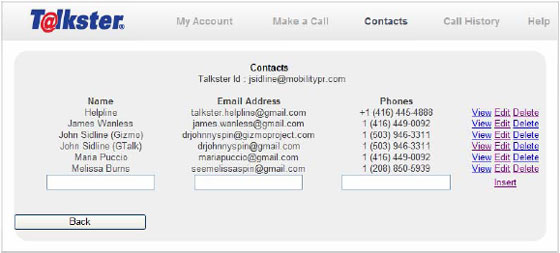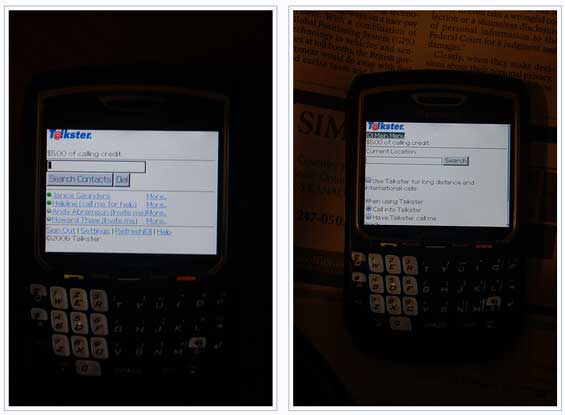 Tonight, Talkster launched a beta of a new presence-based communication platform in the VoIP market, with a focus on the enterprise and aim to connect callers by alias regardless of their device.
Tonight, Talkster launched a beta of a new presence-based communication platform in the VoIP market, with a focus on the enterprise and aim to connect callers by alias regardless of their device.
Talkster is similar to services like Jajah, Rebtel, Hullo, ConnectMeAnywhere, and Fring in that it uses VOIP to make cheap (currently free) long distance phone calls. But those services are highly targeted towards the consumer market, whereas Talkster is not. CEO James Wanless calls the consumer VoIP market a “race to the bottom of rates.” Talkster doesn’t want to play that game. Talkster has its sight set on the enterprise.
Talkster enables calls between and across phones and PCs, with the necessary software bridge. Unlike Jajah and Hullo, however, Talkster doesn’t require a download and works via the Web through your mobile phone and desktop browsers. This makes it more widely available than Jajah’s Symbian based client. Talkster will have a Java client in 2007. Currently, the system connects mobile phones, VoIM (voice over IM), VOIP phones, and PSTN Phones, with the potential to connect to any service that speaks SIP. You can also use Talkster to place free mobile calls to virtually any phone or buddies on MSN, Google Talk, and Gizmo.
After registering for the service online, you have the tedious but necessary task of inputing your contacts’ alias, email address (for VoIM), and phone numbers. VoIM contacts must accept your invitation to be included in Talkster.
 When you log your mobile phone into m.talkster.com, you are greeted with a list of contacts’ VoIM online/offline status and can either connect to the contact over VoIM or be automatically forwarded to their phone number of choice. In the case of a long distance call, Talkster acts as a VOIP bridge between the two callers. When making local calls, Talkster steps out of the way and just connects directly.
When you log your mobile phone into m.talkster.com, you are greeted with a list of contacts’ VoIM online/offline status and can either connect to the contact over VoIM or be automatically forwarded to their phone number of choice. In the case of a long distance call, Talkster acts as a VOIP bridge between the two callers. When making local calls, Talkster steps out of the way and just connects directly.
If you don’t want to place a call on the PC you are working on, Talkster has call-in or call-back options that lets you place a call through the computer, but connect using the phone. The option has definite cost benefits, depending on your mobile plan.
Talkster’s device agnostic model is reminiscent of text based JumpChat and Swarmteams, but incorporating phone calls makes the model much more powerful. The Web interface was a sacrifice but it will at least get Talkster in front of the maximum number of people. An easy-to-use client will really make the service hum and make it far more attractive to test than Jajah or Rebtel. Still, we have yet to see if this is the killer VOIP service we have been waiting for.
Talkster is relying heavily on its enterprise target as the big differentiating factor. We couldn’t get the company to flush out the reasons why it is better suited for the enterprise than the consumer but we were promised that there would be added enterprise functions in 2007. Meanwhile, the beta will battle test the core service.
Alec Saunders was an early beta tester of Talkster – read about his experience here.

